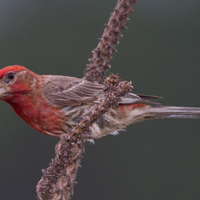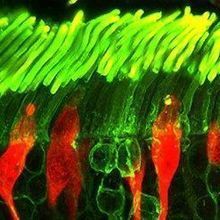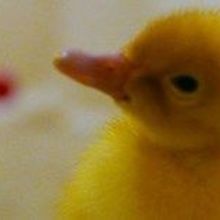Login
Subscribecolor

Chromosomal Rearrangement Linked to Less Mobile Quail
Chloe Tenn | Dec 7, 2021 | 5 min read
The Scientist interviews evolutionary biologist Carles Vilà about how a large genomic inversion detected in common quail affects the birds’ physical characteristics and migratory behaviors.

Why Migratory Birds Often Have Paler Wings Than Other Birds
Amanda Heidt | Dec 7, 2021 | 2 min read
A new study suggests that lighter colors may help these species stay cool on their long journeys, when birds are pushing themselves to their physiological limits.

Eyeless C. elegans Perceives Colors: Study
Shawna Williams | Mar 4, 2021 | 4 min read
The roundworm uses cues from visible light to help avoid eating toxic bacteria with a distinguishing hue.

Infographic: Dialing Down the Glitz
Rachael Moeller Gorman | Sep 1, 2020 | 1 min read
The gene BCO2 enables male and female members of some bird species to display dramatically different color patterns.

The Gene that Makes Female Birds Drab
Rachael Moeller Gorman | Sep 1, 2020 | 3 min read
In some finch species, the difference between colorful males and muted females comes down to one gene, BCO2, which encodes an enzyme that degrades carotenoids.
Gene Regulation Gives Butterflies Their Stunning Looks
Katarina Zimmer | Nov 14, 2019 | 5 min read
Distantly related, lookalike Heliconius species arrive at the same appearance using the same few genes, but regulated differently, according to recent studies.

Image of the Day: Red-Feathered Finches
Emily Makowski | Sep 30, 2019 | 1 min read
Scientists uncover a potential reason why redder house finches have better health.

Image of the Day: Roses Are Red, Poppies Are Too
Carolyn Wilke | Feb 14, 2019 | 1 min read
New research shows how they get their deep hue.

Image of the Day: Red Alert
Sukanya Charuchandra | Aug 6, 2018 | 1 min read
Female zebra finches prefer red-beaked male finches over their orange-beaked counterparts.

Image of the Day: Birds of a Feather
Sukanya Charuchandra | Jul 10, 2018 | 1 min read
Despite containing similar chemical pigments, red and yellow parrot feathers display distinct hues.

Image of the Day: Colorful Butterfly-Bot
The Scientist and The Scientist Staff | Apr 5, 2018 | 1 min read
Scientists engineered biomaterials similar to those chameleons use to change color and applied them to a robot.

Hawaiian Spiders on Different Islands Evolved Same Disguise in Parallel
Catherine Offord | Mar 8, 2018 | 2 min read
In an unusual evolutionary twist, local stick spiders have come up with an almost identical repertoire of color morphs in multiple locations.

Prosthetic Retinas Help Blind Mice See
Ashley Yeager | Mar 6, 2018 | 1 min read
Artificial photoreceptors made of nanowires help restore blind animals’ sensitivity to light.

Image of the Day: Rainbow Butt
The Scientist and The Scientist Staff | Jan 4, 2018 | 1 min read
Scientists explore why male peacock spiders are so colorful.

Newton’s Color Theory, ca. 1665
Ashley P. Taylor | Mar 1, 2017 | 3 min read
Newton’s rainbow forms the familiar ROYGBIV because he thought the range of visible colors should be analogous to the seven-note musical scale.

Study: Ducklings Can Think Abstractly
Alison F. Takemura | Jul 17, 2016 | 1 min read
When imprinted on toy blocks, the young birds gravitate toward new toys that are the same shape or color as the originals, according to a study.

Color Clues in Dino Fossils
Karen Zusi | Aug 31, 2015 | 1 min read
Researchers confirm that some microscopic imprints in fossilized dinosaur feathers are pockets of melanin.

Avian-Inspired Color
Amanda B. Keener | May 26, 2015 | 2 min read
By taking cues from bird feathers, scientists engineer nanoparticle structures that produce striking colors.

The Rise of Color
Jef Akst | Jul 1, 2014 | 1 min read
An analysis of modern birds reveals that carotenoid-based plumage coloring arose several times throughout their evolutionary history, dating as far back as 66 million years ago.
